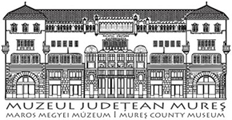Marisia - Maros Megyei Múzeum Évkönyve 27/3. (2003)
Laura Pop: Datini de înmormântare in satul Mihai Viteazu (Jud. Mureş)
190 LAURA POP lti§oare = covor de cänepä, bumbac sau länä pentru a§ternutul patului Masä = fatä de masä tesutä la räzboi Rochere = piesä de port, rochie largä din pänzä, cu pieptära§ din pänzä de aceea§i culoare ata§at in partea de sus. Säräcustä = slujba religioasä a doua searä de priveghi Stolnic = §tergar care se puné pe masa mortului Strajä = lumänare de cearä care se pune pe pieptul mortului, are forma spiralicä. Tesäturä cu ochi§ori = tesäturä din cänepä sau bumbac cu alesäturi, cu foile prinse Tntre eie prin ni§te cheite numite „ochi§ori“. Urloaie = hornuri la casä Funeral customs in the Village Mihai Viteazu (Summary) The Mihai Viteazu village was at the origin a german village, but today is a romanian village. The life together among romanians and germans marked the romanian community even in the customs field. The funeral customs are more conservative based on the relative system. The german’s organization of the village in neighbourhood, named „Nachbarchafts“, was preserved by the romanian community in the Mihai Viteazu village. So there are four neighbourhoods today in the village lead by a „fotär“ (in romanian language), a distorsion for „Nachbarvatern“ in german, in english - „neighbourhood father“. This „fotär“ is that who establishes the obligations of the neighbourhood’s member in all occasion, therefore those at the funeral ceremony also. Following the system we can notice that the neighbourhood’s member replace in certain ritual moments the relatives. Nevertheless the funeral is not more largest that a traditional one even if participes all the neighbourhood’s member. On a traditional funeral participed all the members of the village, at least theoretical.
